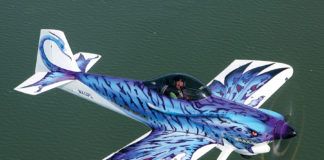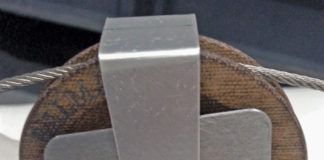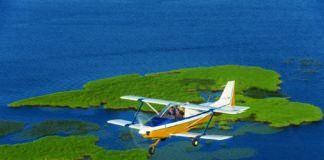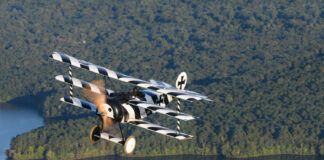About 10 years ago, my wife, Gail, and I decided there was too much to see at Oshkosh, and wouldn’t it be nice if somebody else did the running around and had a forum for us. Nobody took us up on that idea, and so was born the RST Engineering “Best of Show” awards for software and electronic hardware.
In general, we try to give six awards each year, three hardware and three software, or four hardware and two software (like we did this year), or some combination of six. These awards are purely subjective. We like them for no other reason than we like them. Our objective is to give the best bang for the buck, but a clever, expensive piece of gear sometimes hits the mark. You may agree or disagree with our picks, and I wont argue with you.
SOFTWARE
1. Duats (www.duats.com} has come out with free (and thats a wonderful word at Oshkosh) software called Golden Eagle 07, which is a GUI shell for the DUATS flight-planning system. This is DUATS on steroids. I cant begin in a few sentences, much less a few pages, to tell you everything this software will do. However, Leon Thomas (the software creator) and Heather McDonald came to our forum and gee-whizzed us all hollow with just the surface scratch of what the software could do.
Imagine if you can, on your home computer screen, being able to mouse out your route on regular old charts, and then superimpose the DUATS weather on top of it. The nasty stuff lies right across your route? No problem, just pick up your route with a left click and drag it around the weather. Recalculations of distance, time, fuel burn and all the rest of it are instantaneous as soon as you release the mouse button.
Instead of looking down on your route, how about looking at it from the side? Here you can see how the mountains stick up and what your aircraft altitude is going to be at any point in the route. Clouds are at the right level up and down so that you can judge cloud separation. Nasty weather? It shows up, and in the correct color (green for light rain, to red for don’t even think about it). And, as I said, its free.
(Hint: You can download it from the web site or you can ask that a CD-ROM be sent to you. The download is 100 mb; if you have the bandwidth, go for it. I got the CD.)
2. Gil Crouse of DaVinci Technologies (davincitechnologies.com) has written aircraft design and performance software called AirplanePDQ. We gave Gil the BOS (Best of Show) Award in 2002 for PDQ, and he has enhanced it with a suite of design tools. Basic PDQ costs $99, and Enhanced PDQ goes for $190.
Thats not what we gave Gil the award for, however. On his own hook, his own time and his own genius, he rewrote PDQ For Kids and gave (as in free) the software to KidVenture so that youngsters at Oshkosh could design and test their own ideas. Gil and his crew (including sons) spent an inordinate amount of time at KidVenture instead of selling their product at their booth, and we felt that not only the product, but the dedication to the kids of Oshkosh deserved this award.
Gils only comment was that he should have somehow locked out the number of engines and such allowed on an airplane, as most of the kids mounted six jet engines, two tractor prop engines and three pusher prop engines on a single airframe to try and get the speed up to Warp 2.
Hardware
Every now and then we get to do an “aint that clever” award. This time it went to Mutt Muffs, a hearing protector for dogs. I have to admit, it always bothered me a little to have Pixie the Sheltie along with me on a trip, as Im sure it hurt her hearing a bit. (Then again, she always did have selective
3 Michele McGuire of Safe and Sound Pets (www.muttmuffs.com) actually engineered (at no small expense, by the way) a hearing protector for dogs. For $52 you can have any color you want so long as it is gray, and for $65 you can get them in blue, pink and red. Some of the considerations that came into play were what to do with the ears and how to keep it on a dogs head when it tries to scratch it off. These were no small problems, but they were eventually addressed and solved. The ears actually become part of the muff and add to the sound-deadening; the scratch-off problem was solved with a strap under the dogs chin.
A fellow I ran into here at my home airport (GOO) has been using them for a year or so now, and he claims that his dog learned by trying to scratch them off that the noise hurt its ears. He now travels with the dog wearing no chin strap at all, and while the dog had been a reluctant flier before, it now looks forward to jumping into the airplane and being part of the aviation family.
4. Now we get into the expensive stuff. In-the-ear headsets are fast becoming all the rage for the plain and simple reason that they don’t feel like a C-clamp for hours on end. We looked at a couple of them at Oshkosh and came to the conclusion that Clarity Aloft (www.clarityaloft.com) gave the best value for the dollar, although at $525 a pop they are fairly expensive.
The upside? They are quieter than an ANR headset with some 35 to 45 dB of noise reduction. They are lighter (1.5 ounces of head weight) than any muff type headset by a factor of 10 or better. The sound is clear as a bell, and they look cool. Bill Waterman did a great job of mechanical and electrical design on these headsets.
The downside (besides the price)? The headsets have a little volume-control box that has to be inline between the headset and the aircraft jacks. My suspicion (though it couldn’t be confirmed) is that this little box also has the amplifier that most electret microphones need to work with aircraft radios. The earpieces (earplugs) need to be replaced on a regular basis, and the cost is $25 for a six-month (whatever that means) supply. But if I had an extra half of an AMU, Id sure buy a set. (In an effort to not alarm the War Department about the price of aviation items, the members of rec.aviation.owning have designated one Aviation Monetary Unit to be $1000.)
A few years ago, some of us on the newsgroups formed what was called the Taillight Group to see if there was some way of providing collision avoidance information to light aircraft. Out of that group several ideas came to light, and a true rabble-rouser and all-around technical genius named Keith Peshak (www.gtwn.net/~keith.peshak/taillight.htm) cobbled up some hardware as a proof of concept. It worked. What it relied upon was the altitude squawk from your transponder and an altitude squawk from a nearby transponder in another aircraft; take the difference and this is how far the other aircraft is above/below you. Take a signal strength reading and let it equalize over several dozen squawks, and you get a fairly good idea of distance. That gives you altitude and range of your target. Unfortunately the prototype wound up being fairly large.
5. Along comes another technical genius named Jason Clemens at a company called Zaon Flight Systems (www.zaonflight.com, and he squeezes this little idea into something about the size of a hand calculator. He calls it the MRX, powers it from two AA cells, and for $549 it tells you distance to the nearest 10 targets, their relative altitude to you, whether above or below you and whether they are climbing or descending. It has a built-in altimeter, can tell you your squawk code and your altitude encoder readout, and has an audio alert tone that you may feed into your audio system. It is completely self-contained along with its own antenna. Again it is half an AMU, but Id sure like one of those critters on my glareshield when Im mixing it up with the torches at KOAK and KSFO.
6. It may seem strange to give a ground-based generator an award, but Honda (www.hondapowerequipment.com) has really done a favor to those of us who need ground power at the hangar or the workshop. The company has continuously worked to get the sound level down and the power level up, and its new line of EU series generators has done just that.
You all know some of the tricks we play with exhaust to get power up and noise down-mufflers, tuned ports, tuned pipes and all the rest of it. But we have (relatively speaking) a large area in which to do it, and Honda has done it in the size of a suitcase-a small suitcase at that. Hondas Eric Williams and Bob Stan from Honda headquarters fired the 1-kw unit up in the front of the pavilion, and those who were sitting about 40 feet back had trouble even hearing it run.
In this EU series, we go all the way from the 1-kw EU1000 ($800) to the workhorse 6.5-kw EU6500 at $4000. Cheap? No. Not even inexpensive, but if you are only going to own one generator in your life, these are top of the line. Besides, serendipity struck again. I chose the Honda for the award before I knew which of the forum buildings I was going to be in. As it turned out, I gave my forum in the Honda Pavilion this year.
Thats the Oshkosh report. Ill get back to the solar electrical part of the hangar project next month. See ya then.













